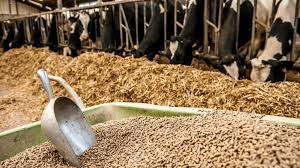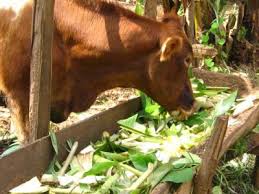Forages can be conserved to feed livestock during periods of shortage caused by limited pasture growth or inadequate pasture conditions, or fed as a supplement. Conserved forages can take the form of hay, haylage, and silage.
Although several methods have been proven as efficient ways to store and preserve forages, it is important, to keep this fact in mind: At best, conserved forages can rarely match the nutritive value of fresh forage because some losses of highly digestible nutrients (sugar, protein, and fat) are unavoidable during conservation and storage.
Basic method of hay making
Forage is cut before it is fully mature (long before it has seeded), to maximize its nutritive value. Although cutting hay early will result in lower total volume, the increase in nutritive value will more than compensate for reduced yields.
Leaves are more nutritious than the stems, and so when cutting forage, it is important that it is cut with as much leaf and as little stem as possible.
Do not leave cut forage to dry in a moist environment, as this will encourage the growth of moulds. These can be extremely harmful to livestock and to people handling it.
The cut forage is laid out in the sun in as thin a layer as possible, and raked a few times and turned regularly to hasten drying.

Chopping forage into small pieces after drying will hasten the dying process.
The drying process may take between 2 to 3 days.
Hay should not be over dried as it may start to ferment and also become a fire hazard.
The dried hay should ideally be stored in form of bales when the moisture content is low, ideally less than 15%. This helps storage and requires less space.
Storage of hay
Hay must be stored in a dry environment.
Hay can be baled and stored under cover or can also be stored by creating hay stacks. Stacks may be covered by plastic sheets to keep out rain and prevent from exposure to excessive sun.
Read Also : Pasture Production and Management Guide
Problem with hay making
If hay is dried in a moist environment, for example during heavy rains season, mould may grow on the hay. These moulds can be extremely toxic to animals as well as the people handling it.
In such cases it is advisable to wait till the end of the rainy season before cutting the forage. This may lead to lower nutritional content in the hay, but this is better than toxic hay. The resultant may be supplemented with other feeds.

On the other hand, drying the hay too fast may lead to shattering of the delicate parts of the plant, causing a subsequent loss of nutrients.
To avoid this, drying can be done in barns by passing hot air through the forage. Although artificial drying produces hay of good quality, it is expensive, but can be attempted on a community basis in areas where there is a need, and the necessary facilities. (NR International, Livestock Production Programme
Read Also : Waterleaf: Health Benefits, Facts, and Recipes
Frequently Asked Questions
We will update this section soon.

